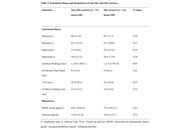

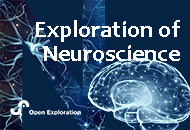


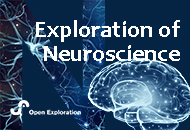
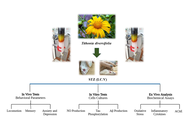
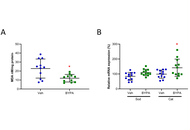


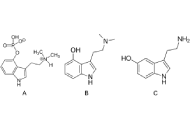
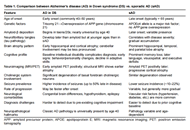
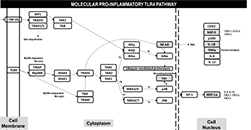
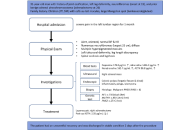



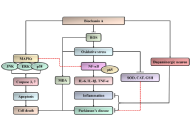
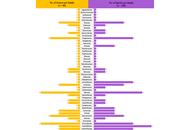
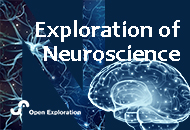

Aim:
This study investigated the effect of brain-derived neurotrophic factor (BDNF) Val66Met polymorphism on post-stroke outcomes, including quality of life, physical fitness, cognitive function, depression, and overall disability.
Methods:
The difference between Met carriers and non-Met carriers was analyzed for the entire sample and in pair-matched analysis, using age, sex, time since stroke, and race.
Results:
We evaluated 89 stroke participants (mean age, 57 ± 10 years; 58% male; 54% White, and 49% Hispanic). Twelve participants (13%) had one copy of the BDNF Val66Met (Val/Met heterozygotes) and none had two copies (Met/Met homozygotes). Comparing Met (n = 12) and non-Met carriers (n = 77), no significant differences were observed in demographics or clinical characteristics, including motor or cognitive outcomes. In pair-matched analysis, a significant difference was observed for the Center for Epidemiological Studies Depression (CES-D) scale, where Met carriers had significantly greater CES-D scores than non-Met carriers (24 ± 16 vs. 9 ± 9, p = 0.011). Regardless of the chosen CES-D cut-off scores (≥ 16 vs. ≥ 20), more cases of depressive symptomatology were observed among those with the BDNF Val66Met polymorphism than those without it (p values < 0.05).
Conclusions:
The BDNF Val66Met polymorphism may be associated with post-stroke depression but not motor or cognitive recovery.
Aim:
This study investigated the effect of brain-derived neurotrophic factor (BDNF) Val66Met polymorphism on post-stroke outcomes, including quality of life, physical fitness, cognitive function, depression, and overall disability.
Methods:
The difference between Met carriers and non-Met carriers was analyzed for the entire sample and in pair-matched analysis, using age, sex, time since stroke, and race.
Results:
We evaluated 89 stroke participants (mean age, 57 ± 10 years; 58% male; 54% White, and 49% Hispanic). Twelve participants (13%) had one copy of the BDNF Val66Met (Val/Met heterozygotes) and none had two copies (Met/Met homozygotes). Comparing Met (n = 12) and non-Met carriers (n = 77), no significant differences were observed in demographics or clinical characteristics, including motor or cognitive outcomes. In pair-matched analysis, a significant difference was observed for the Center for Epidemiological Studies Depression (CES-D) scale, where Met carriers had significantly greater CES-D scores than non-Met carriers (24 ± 16 vs. 9 ± 9, p = 0.011). Regardless of the chosen CES-D cut-off scores (≥ 16 vs. ≥ 20), more cases of depressive symptomatology were observed among those with the BDNF Val66Met polymorphism than those without it (p values < 0.05).
Conclusions:
The BDNF Val66Met polymorphism may be associated with post-stroke depression but not motor or cognitive recovery.
DOI: https://doi.org/10.37349/en.2025.1006115

Guillain-Barré Syndrome (GBS) is a rare cause of acute, flaccid paralysis and affects populations around the world, usually in the setting of recent gastrointestinal infection. The myelin sheaths of affected patients are destroyed, and consequently, the disease can manifest variably with the most common complaints including weakness, disturbances in sensation, and pain. Multiple available pharmacotherapies are employed to address disease progression and promote the reversal of symptoms. However, there is no widely accepted guideline detailing tiers of pain management options, despite pain being a significant primary complaint during the acute phase of the disease. To address this, we searched the GBS literature for publications that specifically discussed patient pain, how the pain was managed by the clinician, and how patients responded to various modalities. We discuss the findings of the literature review we conducted, evaluate the expansive list of existing options for treating pain and how they fared in symptom resolution, and draw conclusions based on our observations of which interventions addressed patient pain effectively and which were less successful. While general management of GBS, including treatment and efforts towards symptom reversal, has been robustly discussed in the literature, our work stresses the lack of research towards pain management in GBS and emphasizes the need to fill the gap in patient care for patients with this disease.
Guillain-Barré Syndrome (GBS) is a rare cause of acute, flaccid paralysis and affects populations around the world, usually in the setting of recent gastrointestinal infection. The myelin sheaths of affected patients are destroyed, and consequently, the disease can manifest variably with the most common complaints including weakness, disturbances in sensation, and pain. Multiple available pharmacotherapies are employed to address disease progression and promote the reversal of symptoms. However, there is no widely accepted guideline detailing tiers of pain management options, despite pain being a significant primary complaint during the acute phase of the disease. To address this, we searched the GBS literature for publications that specifically discussed patient pain, how the pain was managed by the clinician, and how patients responded to various modalities. We discuss the findings of the literature review we conducted, evaluate the expansive list of existing options for treating pain and how they fared in symptom resolution, and draw conclusions based on our observations of which interventions addressed patient pain effectively and which were less successful. While general management of GBS, including treatment and efforts towards symptom reversal, has been robustly discussed in the literature, our work stresses the lack of research towards pain management in GBS and emphasizes the need to fill the gap in patient care for patients with this disease.
DOI: https://doi.org/10.37349/en.2025.1006114

Cyclic vomiting syndrome (CVS) is a rare disorder in which stereotypical periods of intermittent nausea and vomiting last between hours and over a week. The disorder overlaps with migraine, and the current treatment recommendations follow those of migraine management. The current patient had experienced vomiting periods lasting up to a week since the age of two. Prophylactic amitriptyline had led to probably slightly longer intervals between CVS periods, while several medications had proven ineffective. At the age of 17, there was an excellent response to peroral olanzapine, which eventually proved sufficient to abort the vomiting periods in a single dose when taken at the beginning of one. In light of these and previously reported cases, early administration of olanzapine is suggested to treat CVS periods.
Cyclic vomiting syndrome (CVS) is a rare disorder in which stereotypical periods of intermittent nausea and vomiting last between hours and over a week. The disorder overlaps with migraine, and the current treatment recommendations follow those of migraine management. The current patient had experienced vomiting periods lasting up to a week since the age of two. Prophylactic amitriptyline had led to probably slightly longer intervals between CVS periods, while several medications had proven ineffective. At the age of 17, there was an excellent response to peroral olanzapine, which eventually proved sufficient to abort the vomiting periods in a single dose when taken at the beginning of one. In light of these and previously reported cases, early administration of olanzapine is suggested to treat CVS periods.
DOI: https://doi.org/10.37349/en.2025.1006113

Schizophrenia (SZ) is a complex psychiatric disorder characterized by disruptions in cognition, perception, and behavior, contributing significantly to the global burden of psychiatric disorders and necessitating ongoing research into its pathophysiology, diagnosis, and treatment. This narrative review explores recent insights into SZ research, highlighting the genetic, neurochemical, and neurodevelopmental factors that contribute to the disorder. Emerging evidence underscores the dynamic interplay between neurotransmitter imbalances, particularly involving dopamine, glutamate, and gamma-aminobutyric acid (GABA), and neuroinflammation, oxidative stress, and immune dysregulation in the pathophysiology of SZ. Neuroimaging, clinical staging models, and multi-omics technologies have deepened our understanding of structural and functional brain abnormalities, identifying potential biomarkers for early detection and subtyping. This has refined diagnostic frameworks and informed precision psychiatry approaches. Advances in pharmacological treatments, including trace amine-associated receptor 1 agonists, glutamatergic modulators, psychedelics, and anti-inflammatory agents, offer new therapeutic possibilities beyond conventional dopamine antagonists. Novel targets, such as N-methyl-D-aspartate (NMDA) receptor modulation and neuroprotective strategies, are also being explored to address negative and cognitive symptoms. Additionally, non-pharmacological interventions, such as neuromodulation techniques, digital therapeutics, and psychosocial interventions, are promising complementary strategies. Digital phenotyping, machine learning (ML), and artificial intelligence (AI)-driven tools enable real-time symptom tracking, early risk prediction, and personalized care delivery. Despite these advancements, challenges remain in early diagnosis, treatment adherence, and equitable access to mental health care, particularly in low-resource settings. Therefore, addressing these barriers requires interdisciplinary collaboration, public health education, and the integration of scalable, culturally sensitive, and AI-based mental health innovations. Future research should prioritize multi-omics integration, longitudinal and transdiagnostic studies, biomarker validation, and the real-world implementation of personalized interventions to improve outcomes and quality of life for individuals living with SZ.
Schizophrenia (SZ) is a complex psychiatric disorder characterized by disruptions in cognition, perception, and behavior, contributing significantly to the global burden of psychiatric disorders and necessitating ongoing research into its pathophysiology, diagnosis, and treatment. This narrative review explores recent insights into SZ research, highlighting the genetic, neurochemical, and neurodevelopmental factors that contribute to the disorder. Emerging evidence underscores the dynamic interplay between neurotransmitter imbalances, particularly involving dopamine, glutamate, and gamma-aminobutyric acid (GABA), and neuroinflammation, oxidative stress, and immune dysregulation in the pathophysiology of SZ. Neuroimaging, clinical staging models, and multi-omics technologies have deepened our understanding of structural and functional brain abnormalities, identifying potential biomarkers for early detection and subtyping. This has refined diagnostic frameworks and informed precision psychiatry approaches. Advances in pharmacological treatments, including trace amine-associated receptor 1 agonists, glutamatergic modulators, psychedelics, and anti-inflammatory agents, offer new therapeutic possibilities beyond conventional dopamine antagonists. Novel targets, such as N-methyl-D-aspartate (NMDA) receptor modulation and neuroprotective strategies, are also being explored to address negative and cognitive symptoms. Additionally, non-pharmacological interventions, such as neuromodulation techniques, digital therapeutics, and psychosocial interventions, are promising complementary strategies. Digital phenotyping, machine learning (ML), and artificial intelligence (AI)-driven tools enable real-time symptom tracking, early risk prediction, and personalized care delivery. Despite these advancements, challenges remain in early diagnosis, treatment adherence, and equitable access to mental health care, particularly in low-resource settings. Therefore, addressing these barriers requires interdisciplinary collaboration, public health education, and the integration of scalable, culturally sensitive, and AI-based mental health innovations. Future research should prioritize multi-omics integration, longitudinal and transdiagnostic studies, biomarker validation, and the real-world implementation of personalized interventions to improve outcomes and quality of life for individuals living with SZ.
DOI: https://doi.org/10.37349/en.2025.1006112

Alzheimer’s disease (AD) is a chronic neurodegenerative disorder with declining memory and cognitive impairment, largely mediated by extracellular amyloid-beta (Aβ). Although the amyloid cascade and tau protein hypotheses have long served as established frameworks for AD pathology, recent evidence suggests that long-term infections, particularly with Chlamydia pneumoniae (C. pneumoniae), may contribute to disease progression. A systematic search strategy was used to identify relevant literature using PubMed, Scopus, Google Scholar, and Web of Science. Keywords and Boolean operators such as “Chlamydia pneumoniae and Alzheimer’s disease,” “neuroinflammation,” “amyloid-beta,” and “tau protein” were applied, with filters for peer-reviewed articles, human and experimental studies, and publications from the past 25 years. Epidemiological and background data were supplemented by official sources, including the Centers for Disease Control and Prevention (CDC) and the World Health Organization (WHO). This review examines the potential relationship of C. pneumoniae infection with AD pathogenesis. Studies have identified DNA and antigens of C. pneumoniae in AD-infected brain regions, often co-localized within Aβ plaques and neurofibrillary tangles (NFTs). Proposed mechanisms of CNS invasion include olfactory, hematogenous, and immune cell-mediated routes, leading to persistent glial activation, neuroinflammation, altered amyloid precursor protein processing, and tau protein hyperphosphorylation. Experimental models support these associations, with infected animals developing AD-like pathology. Diagnostic challenges persist due to the limitations of PCR and immunohistochemistry, though advanced approaches such as next-generation sequencing and TSPO-PET imaging are emerging. Potential therapeutic approaches include antimicrobial and immunomodulatory strategies, although human trials have shown mixed results. While current evidence suggests a possible link, causality remains unproven. Future research must prioritize large-scale, longitudinal, and mechanistic studies to clarify these relationships. Establishing a definitive role for C. pneumoniae in AD pathogenesis could reshape current understanding of disease etiology and inform the development of novel preventive and therapeutic strategies.
Alzheimer’s disease (AD) is a chronic neurodegenerative disorder with declining memory and cognitive impairment, largely mediated by extracellular amyloid-beta (Aβ). Although the amyloid cascade and tau protein hypotheses have long served as established frameworks for AD pathology, recent evidence suggests that long-term infections, particularly with Chlamydia pneumoniae (C. pneumoniae), may contribute to disease progression. A systematic search strategy was used to identify relevant literature using PubMed, Scopus, Google Scholar, and Web of Science. Keywords and Boolean operators such as “Chlamydia pneumoniae and Alzheimer’s disease,” “neuroinflammation,” “amyloid-beta,” and “tau protein” were applied, with filters for peer-reviewed articles, human and experimental studies, and publications from the past 25 years. Epidemiological and background data were supplemented by official sources, including the Centers for Disease Control and Prevention (CDC) and the World Health Organization (WHO). This review examines the potential relationship of C. pneumoniae infection with AD pathogenesis. Studies have identified DNA and antigens of C. pneumoniae in AD-infected brain regions, often co-localized within Aβ plaques and neurofibrillary tangles (NFTs). Proposed mechanisms of CNS invasion include olfactory, hematogenous, and immune cell-mediated routes, leading to persistent glial activation, neuroinflammation, altered amyloid precursor protein processing, and tau protein hyperphosphorylation. Experimental models support these associations, with infected animals developing AD-like pathology. Diagnostic challenges persist due to the limitations of PCR and immunohistochemistry, though advanced approaches such as next-generation sequencing and TSPO-PET imaging are emerging. Potential therapeutic approaches include antimicrobial and immunomodulatory strategies, although human trials have shown mixed results. While current evidence suggests a possible link, causality remains unproven. Future research must prioritize large-scale, longitudinal, and mechanistic studies to clarify these relationships. Establishing a definitive role for C. pneumoniae in AD pathogenesis could reshape current understanding of disease etiology and inform the development of novel preventive and therapeutic strategies.
DOI: https://doi.org/10.37349/en.2025.1006111
This article belongs to the special issue Progress in Alzheimer's disease research: etiology, molecular mechanisms involved in disease progression, and advances in therapies aimed at slowing or reversing neurodegeneration

DOI: https://doi.org/10.37349/en.2025.1006110
This article belongs to the special issue Novel Therapeutic Approaches for the Treatment of Depression

Aim:
Alzheimer’s disease (AD) is a chronic neurodegenerative brain dysfunction and the most common form of dementia, especially in the elderly, and is considered a serious problem for health systems worldwide. It is a multifactorial and progressive condition, characterized by memory loss, personality changes and decline in cognitive function, in addition to neuropsychiatric complications such as depression, anxiety, sleep disorders, and others, further reducing the quality of life of patients with AD. Since the introduction of galantamine in AD therapy, medicinal plants and herbal remedies are gaining increasing interest as complementary and alternative interventions and are a valuable source for the development of drug candidates for AD. This work aims to explore Tithonia diversifolia ethanol extract (EETD), which showed an acetylcholinesterase (AChE) inhibitory activity like rivastigmine, as a new candidate for molecular targets of AD.
Methods:
Mice were submitted to intracerebroventricular (I.C.V.) streptozotocin (STZ)-induced AD (2.5 mg/mL) and separated into different groups: sham, vehicle, rivastigmine (0.6 mg/kg), and EETD (0.1, 1.0, and 3.0 mg/kg). After AD induction, the animals were treated for 24 days and submitted to behavioral tests of memory, anxiety and depression. After the tests, the animals were sacrificed and the hippocampus was removed for assays of oxidative stress, AChE activity and markers of neuroinflammation. In vitro studies evaluated the effect of the extract on tau hyperphosphorylation, beta-amyloid (Aβ), and nitric oxide (NO) production.
Results:
EETD promoted a reduction in STZ-induced behavioral parameters of depression and anxiety, as well as reversed memory deficits. Biochemical assays revealed that EETD increased antioxidant defenses, as well as decreased levels of neuroinflammation markers. In addition, EETD partially inhibited Aβ production.
Conclusions:
The results together suggest that the plant exhibits therapeutic relevance in AD. However, studies are needed to identify the phytoconstituents responsible for such effects.
Aim:
Alzheimer’s disease (AD) is a chronic neurodegenerative brain dysfunction and the most common form of dementia, especially in the elderly, and is considered a serious problem for health systems worldwide. It is a multifactorial and progressive condition, characterized by memory loss, personality changes and decline in cognitive function, in addition to neuropsychiatric complications such as depression, anxiety, sleep disorders, and others, further reducing the quality of life of patients with AD. Since the introduction of galantamine in AD therapy, medicinal plants and herbal remedies are gaining increasing interest as complementary and alternative interventions and are a valuable source for the development of drug candidates for AD. This work aims to explore Tithonia diversifolia ethanol extract (EETD), which showed an acetylcholinesterase (AChE) inhibitory activity like rivastigmine, as a new candidate for molecular targets of AD.
Methods:
Mice were submitted to intracerebroventricular (I.C.V.) streptozotocin (STZ)-induced AD (2.5 mg/mL) and separated into different groups: sham, vehicle, rivastigmine (0.6 mg/kg), and EETD (0.1, 1.0, and 3.0 mg/kg). After AD induction, the animals were treated for 24 days and submitted to behavioral tests of memory, anxiety and depression. After the tests, the animals were sacrificed and the hippocampus was removed for assays of oxidative stress, AChE activity and markers of neuroinflammation. In vitro studies evaluated the effect of the extract on tau hyperphosphorylation, beta-amyloid (Aβ), and nitric oxide (NO) production.
Results:
EETD promoted a reduction in STZ-induced behavioral parameters of depression and anxiety, as well as reversed memory deficits. Biochemical assays revealed that EETD increased antioxidant defenses, as well as decreased levels of neuroinflammation markers. In addition, EETD partially inhibited Aβ production.
Conclusions:
The results together suggest that the plant exhibits therapeutic relevance in AD. However, studies are needed to identify the phytoconstituents responsible for such effects.
DOI: https://doi.org/10.37349/en.2025.1006109
This article belongs to the special issue Progress in Alzheimer's disease research: etiology, molecular mechanisms involved in disease progression, and advances in therapies aimed at slowing or reversing neurodegeneration

Aim:
We previously observed oxidative stress and neuroinflammation caused behavioral and neurochemical changes in young Gabrb2 (gamma-aminobutyric acid type A receptor β2 subunit) knockout (KO) mice. Aging was moderated in a D-galactose-induced accelerated aging mouse model by an oral Chinese medicinal herbal formula BYPA consisting of Bupleurum chinense, Corydalis yanhusuo, Polygonum multiflorum, and Albizia julibrissin. The present study aimed to examine first whether Gabrb2-KO phenotypes observed in young adult mice would remain in aged mice, and whether BYPA may display a role of anti-aging in naturally aged mice.
Methods:
A range of behavioral tests were performed on naturally aged Gabrb2-KO and wild-type (WT) mice treated with BYPA. Oxidation stress level was evaluated by MDA (malondialdehyde) test, and the expressions of antioxidant enzymes (superoxide dismutase and catalase) were measured using RT-qPCR (reverse transcription-quantitative polymerase chain reaction).
Results:
Behavioral tests on aged Gabrb2-KO mice showed hyper-locomotor activity, social function deficit, decreased levels of anxiety and depression, consistent with a previous study on young Gabrb2-KO mice. Oral administration of BYPA ameliorated anxiety, activity, and depression. Remarkably, BYPA protected facial tissues with regrowth of significantly lost hairs and whiskers due to aging. It also reduced oxidative stress levels and enhanced the expression of antioxidant enzymes.
Conclusions:
The present study showed that schizophrenia-like behavioral changes were exhibited by aged Gabrb2-KO mice, similar to what was reported earlier, suggesting that the observed behavioral changes did not result from any developmental delay, but a direct result of Gabrb2-KO, reconfirming the critical role of Gabrb2 in schizophrenia etiology. Since the BYPA herbal formula moderated the oxidative status and enhanced the expressions of antioxidant enzymes in D-galactose-accelerated aging as well as naturally aged mice, it might furnish a useful health supplement to both the schizophrenic and the aged populations, due to its significant antioxidation and anti-inflammation effects exerted in the brain.
Aim:
We previously observed oxidative stress and neuroinflammation caused behavioral and neurochemical changes in young Gabrb2 (gamma-aminobutyric acid type A receptor β2 subunit) knockout (KO) mice. Aging was moderated in a D-galactose-induced accelerated aging mouse model by an oral Chinese medicinal herbal formula BYPA consisting of Bupleurum chinense, Corydalis yanhusuo, Polygonum multiflorum, and Albizia julibrissin. The present study aimed to examine first whether Gabrb2-KO phenotypes observed in young adult mice would remain in aged mice, and whether BYPA may display a role of anti-aging in naturally aged mice.
Methods:
A range of behavioral tests were performed on naturally aged Gabrb2-KO and wild-type (WT) mice treated with BYPA. Oxidation stress level was evaluated by MDA (malondialdehyde) test, and the expressions of antioxidant enzymes (superoxide dismutase and catalase) were measured using RT-qPCR (reverse transcription-quantitative polymerase chain reaction).
Results:
Behavioral tests on aged Gabrb2-KO mice showed hyper-locomotor activity, social function deficit, decreased levels of anxiety and depression, consistent with a previous study on young Gabrb2-KO mice. Oral administration of BYPA ameliorated anxiety, activity, and depression. Remarkably, BYPA protected facial tissues with regrowth of significantly lost hairs and whiskers due to aging. It also reduced oxidative stress levels and enhanced the expression of antioxidant enzymes.
Conclusions:
The present study showed that schizophrenia-like behavioral changes were exhibited by aged Gabrb2-KO mice, similar to what was reported earlier, suggesting that the observed behavioral changes did not result from any developmental delay, but a direct result of Gabrb2-KO, reconfirming the critical role of Gabrb2 in schizophrenia etiology. Since the BYPA herbal formula moderated the oxidative status and enhanced the expressions of antioxidant enzymes in D-galactose-accelerated aging as well as naturally aged mice, it might furnish a useful health supplement to both the schizophrenic and the aged populations, due to its significant antioxidation and anti-inflammation effects exerted in the brain.
DOI: https://doi.org/10.37349/en.2025.1006108

Aim:
This study aimed to assess the relationship between clinician adherence to International League Against Epilepsy (ILAE) management guidelines and seizure freedom in adult patients with epilepsy at a Mexican tertiary care center.
Methods:
This retrospective cross-sectional study analyzed 404 adult outpatients with epilepsy from an institutional database (January–October 2013). Data were collected on demographic characteristics, seizure types, diagnostic workup completeness, treatment regimens, weight-adjusted dosing, self-reported adherence, and seizure freedom (defined as being seizure-free for at least 3 months). Statistical analysis included chi-squared tests (χ2) for categorical variables and multivariate logistic regression to identify independent predictors of seizure freedom.
Results:
Of 404 patients analyzed (58.7% female, mean age 33 ± 13 years), 49.3% achieved seizure freedom. Generalized seizures (including primary and secondarily generalized seizures) were most common (66%), followed by focal seizures (30%). Diagnostic studies included an electroencephalogram in 80% and a magnetic resonance imaging scan in 75% of patients. Monotherapy was used in 50.7%, polytherapy in 44.6%, with weight-adjusted dosing achieved in 92%. Self-reported treatment adherence was 81%. Factors significantly associated with seizure freedom included treatment adherence (51.4% vs. 27.3% in non-adherent patients, χ2 = 13.56, p < 0.001), monotherapy vs. polytherapy (71.7% vs. 62.9%, χ2 = 46.07, p < 0.001), and adequate weight-adjusted dosing (44.9% vs. 32.3%, χ2 = 5.97, p = 0.01).
Conclusions:
Adherence to ILAE management guidelines, particularly regarding monotherapy selection, weight-adjusted dosing, and treatment adherence, was significantly associated with improved seizure freedom rates. These findings underscore the importance of implementing evidence-based epilepsy management protocols systematically in clinical practice.
Aim:
This study aimed to assess the relationship between clinician adherence to International League Against Epilepsy (ILAE) management guidelines and seizure freedom in adult patients with epilepsy at a Mexican tertiary care center.
Methods:
This retrospective cross-sectional study analyzed 404 adult outpatients with epilepsy from an institutional database (January–October 2013). Data were collected on demographic characteristics, seizure types, diagnostic workup completeness, treatment regimens, weight-adjusted dosing, self-reported adherence, and seizure freedom (defined as being seizure-free for at least 3 months). Statistical analysis included chi-squared tests (χ2) for categorical variables and multivariate logistic regression to identify independent predictors of seizure freedom.
Results:
Of 404 patients analyzed (58.7% female, mean age 33 ± 13 years), 49.3% achieved seizure freedom. Generalized seizures (including primary and secondarily generalized seizures) were most common (66%), followed by focal seizures (30%). Diagnostic studies included an electroencephalogram in 80% and a magnetic resonance imaging scan in 75% of patients. Monotherapy was used in 50.7%, polytherapy in 44.6%, with weight-adjusted dosing achieved in 92%. Self-reported treatment adherence was 81%. Factors significantly associated with seizure freedom included treatment adherence (51.4% vs. 27.3% in non-adherent patients, χ2 = 13.56, p < 0.001), monotherapy vs. polytherapy (71.7% vs. 62.9%, χ2 = 46.07, p < 0.001), and adequate weight-adjusted dosing (44.9% vs. 32.3%, χ2 = 5.97, p = 0.01).
Conclusions:
Adherence to ILAE management guidelines, particularly regarding monotherapy selection, weight-adjusted dosing, and treatment adherence, was significantly associated with improved seizure freedom rates. These findings underscore the importance of implementing evidence-based epilepsy management protocols systematically in clinical practice.
DOI: https://doi.org/10.37349/en.2025.1006107
This article belongs to the special issue Advances in Epilepsy Research

Recent progress in translational neuroscience has significantly advanced our understanding of neurological diseases. Research progress closely went in line with innovations in research methods, which have expanded our insights considerably beyond previous limits. However, despite the development of disease-modifying treatments, therapeutic options in brain diseases still lag behind fundamental discoveries in basic neuroscience. This perspective examines the factors that hinder clinical progress in translational neuroscience and provides solutions on how to overcome them. Editorial board members of Exploration of Neuroscience were interrogated about the most prominent challenges they see in translational neuroscience and about possible ways to overcome these issues. Key challenges were seen at the interface between experimental research and clinical studies by several members, both from the basic and applied neuroscience fields, which include the selection of appropriate study readouts and endpoints. The establishment of refined study endpoints, combined with biomarkers capable of predicting treatment responses in human patients, will be crucial for the successful clinical implementation of new therapies. Further obstacles were found in the standardization of experimental models, interventions, and assessments both in animals and humans, as well as in the development of personalized treatment strategies. These challenges can be addressed through more clearly defined experimental procedures that closely match clinical conditions and precision-based approaches that ensure efficient therapeutic responses. As a great opportunity, treatment options targeting pathophysiological processes in multiple brain diseases and disease processes in different organ systems were noted. Significant barriers remain in the funding of investigator-driven clinical trials through public research programs, as well as the education of translational and clinician scientists dedicated to clinical translation. Enhanced communication between experimental neuroscientists and clinicians, with a shared understanding and common language, will be essential for the success of future research endeavors.
Recent progress in translational neuroscience has significantly advanced our understanding of neurological diseases. Research progress closely went in line with innovations in research methods, which have expanded our insights considerably beyond previous limits. However, despite the development of disease-modifying treatments, therapeutic options in brain diseases still lag behind fundamental discoveries in basic neuroscience. This perspective examines the factors that hinder clinical progress in translational neuroscience and provides solutions on how to overcome them. Editorial board members of Exploration of Neuroscience were interrogated about the most prominent challenges they see in translational neuroscience and about possible ways to overcome these issues. Key challenges were seen at the interface between experimental research and clinical studies by several members, both from the basic and applied neuroscience fields, which include the selection of appropriate study readouts and endpoints. The establishment of refined study endpoints, combined with biomarkers capable of predicting treatment responses in human patients, will be crucial for the successful clinical implementation of new therapies. Further obstacles were found in the standardization of experimental models, interventions, and assessments both in animals and humans, as well as in the development of personalized treatment strategies. These challenges can be addressed through more clearly defined experimental procedures that closely match clinical conditions and precision-based approaches that ensure efficient therapeutic responses. As a great opportunity, treatment options targeting pathophysiological processes in multiple brain diseases and disease processes in different organ systems were noted. Significant barriers remain in the funding of investigator-driven clinical trials through public research programs, as well as the education of translational and clinician scientists dedicated to clinical translation. Enhanced communication between experimental neuroscientists and clinicians, with a shared understanding and common language, will be essential for the success of future research endeavors.
DOI: https://doi.org/10.37349/en.2025.1006106

Treatment resistant depression (TRD) is frequently encountered in clinical practice. The lack of response of the condition to conventional medications and augmentation strategies has spawned the search for novel treatment approaches. Psychedelic medications used in conjunction with intensive psychotherapy, so-called psychedelic-assisted psychotherapy (PAP), have been evaluated in a limited number of studies as an alternative tactic. This psychedelic renaissance has seen psilocybin, a naturally occurring, potentially hallucinogenic substance occurring in some species of mushrooms, used as one exemplar. The definition of “treatment resistance” varies between different authorities, but there is general agreement that a minimum standard is failure to respond to at least two pharmacological agents from different classes used at a therapeutic dose for an adequate length of time. In the studies to date, more stringent definitions have mostly been applied. Each of the clinical evaluations finds that the addition of a single dose of psilocybin to the psychotherapeutic regimen produces a rapid and clinically significant decline in depressive symptomatology, which is mostly retained in follow-up evaluations out to 12 weeks or longer. Psilocybin was well tolerated with mostly mild to moderate side effects of elevated blood pressure, fatigue, lack of concentration, headache, lethargy, vertigo, feeling of physical or emotional weakness, decreased appetite, nausea, feeling dull, and being easily exhausted, which were transient. Hallucinogen persisting perception disorder (HPPD) has occasionally been reported, while there were few reports of suicidal ideation and behaviour. Psilocybin appears to offer the promise of rapid alleviation of resistant depressive symptoms, but further controlled evaluations are necessary before the drug can be given routinely.
Treatment resistant depression (TRD) is frequently encountered in clinical practice. The lack of response of the condition to conventional medications and augmentation strategies has spawned the search for novel treatment approaches. Psychedelic medications used in conjunction with intensive psychotherapy, so-called psychedelic-assisted psychotherapy (PAP), have been evaluated in a limited number of studies as an alternative tactic. This psychedelic renaissance has seen psilocybin, a naturally occurring, potentially hallucinogenic substance occurring in some species of mushrooms, used as one exemplar. The definition of “treatment resistance” varies between different authorities, but there is general agreement that a minimum standard is failure to respond to at least two pharmacological agents from different classes used at a therapeutic dose for an adequate length of time. In the studies to date, more stringent definitions have mostly been applied. Each of the clinical evaluations finds that the addition of a single dose of psilocybin to the psychotherapeutic regimen produces a rapid and clinically significant decline in depressive symptomatology, which is mostly retained in follow-up evaluations out to 12 weeks or longer. Psilocybin was well tolerated with mostly mild to moderate side effects of elevated blood pressure, fatigue, lack of concentration, headache, lethargy, vertigo, feeling of physical or emotional weakness, decreased appetite, nausea, feeling dull, and being easily exhausted, which were transient. Hallucinogen persisting perception disorder (HPPD) has occasionally been reported, while there were few reports of suicidal ideation and behaviour. Psilocybin appears to offer the promise of rapid alleviation of resistant depressive symptoms, but further controlled evaluations are necessary before the drug can be given routinely.
DOI: https://doi.org/10.37349/en.2025.1006105
This article belongs to the special issue Novel Therapeutic Approaches for the Treatment of Depression

Down syndrome (DS), caused by trisomy 21, is strongly associated with an increased risk of early-onset Alzheimer’s disease (AD). This work explores the cellular, genetic, epigenetic, and neuropsychological mechanisms that underlie the accelerated development of AD in individuals with DS. We review key contributors such as amyloid-β accumulation, mitochondrial dysfunction, oxidative stress, tau pathology, neuroinflammation, and chromosomal and epigenetic instability in the neuropathology of AD in DS. Particular attention is given to genes, microRNAs, and chromatin remodeling factors encoded by human chromosome 21 (Hsa21) that regulate these pathological processes. We also highlight the roles of non-coding RNAs and altered DNA methylation patterns in modulating gene expression and neuronal vulnerability. Additionally, the writing evaluates current pharmacological and non-pharmacological interventions and addresses the critical need for inclusive, person-centered health services. Integrating molecular biology with clinical perspectives, the review emphasizes the importance of early diagnosis and coordinated care strategies for individuals with DS at risk for AD.
Down syndrome (DS), caused by trisomy 21, is strongly associated with an increased risk of early-onset Alzheimer’s disease (AD). This work explores the cellular, genetic, epigenetic, and neuropsychological mechanisms that underlie the accelerated development of AD in individuals with DS. We review key contributors such as amyloid-β accumulation, mitochondrial dysfunction, oxidative stress, tau pathology, neuroinflammation, and chromosomal and epigenetic instability in the neuropathology of AD in DS. Particular attention is given to genes, microRNAs, and chromatin remodeling factors encoded by human chromosome 21 (Hsa21) that regulate these pathological processes. We also highlight the roles of non-coding RNAs and altered DNA methylation patterns in modulating gene expression and neuronal vulnerability. Additionally, the writing evaluates current pharmacological and non-pharmacological interventions and addresses the critical need for inclusive, person-centered health services. Integrating molecular biology with clinical perspectives, the review emphasizes the importance of early diagnosis and coordinated care strategies for individuals with DS at risk for AD.
DOI: https://doi.org/10.37349/en.2025.1006104
This article belongs to the special issue Progress in Alzheimer's disease research: etiology, molecular mechanisms involved in disease progression, and advances in therapies aimed at slowing or reversing neurodegeneration

Mucopolysaccharidosis type IIIB (MPS IIIB), or Sanfilippo Syndrome type B, is a lysosomal storage disorder caused by mutations in the NAGLU gene, which encodes the enzyme alpha-N-acetylglucosaminidase, responsible for the degradation of heparan sulfate. Progressive accumulation of undegraded glycosaminoglycans primarily affects the central nervous system, resulting in severe neurodegeneration. Cellular findings reveal impaired intracellular trafficking, especially within the Golgi apparatus, linked to GM130 depletion and accumulation of GM2 and GM3 gangliosides. Endocytic vesicles fail to properly fuse with lysosomes due to genetic defects, disrupting lysosomal degradation. This contributes to oxidative stress, mitochondrial dysfunction, and mitophagy failure, which collectively drive neuronal apoptosis. MPS IIIB shares pathways with Alzheimer’s and Parkinson’s, suggesting cellular aging processes. Given the lack of specific treatment, modulation of inflammatory pathways such as TLR4 emerges as a potential therapeutic strategy.
Mucopolysaccharidosis type IIIB (MPS IIIB), or Sanfilippo Syndrome type B, is a lysosomal storage disorder caused by mutations in the NAGLU gene, which encodes the enzyme alpha-N-acetylglucosaminidase, responsible for the degradation of heparan sulfate. Progressive accumulation of undegraded glycosaminoglycans primarily affects the central nervous system, resulting in severe neurodegeneration. Cellular findings reveal impaired intracellular trafficking, especially within the Golgi apparatus, linked to GM130 depletion and accumulation of GM2 and GM3 gangliosides. Endocytic vesicles fail to properly fuse with lysosomes due to genetic defects, disrupting lysosomal degradation. This contributes to oxidative stress, mitochondrial dysfunction, and mitophagy failure, which collectively drive neuronal apoptosis. MPS IIIB shares pathways with Alzheimer’s and Parkinson’s, suggesting cellular aging processes. Given the lack of specific treatment, modulation of inflammatory pathways such as TLR4 emerges as a potential therapeutic strategy.
DOI: https://doi.org/10.37349/en.2025.1006103

Neurofibromatosis type 1 (NF1) is a hereditary, autosomal dominant condition marked by the development of tumors along the nervous system due to uncontrolled cell proliferation. The current case reports a 31-year-old male patient diagnosed with NF1 with the involvement of bilateral pheochromocytomas and colonic inflammatory polyps/leiomyoma. A genetic profile was explored through whole-exome sequencing to identify pathogenic variants, and segregation analysis was subsequently performed in the patient’s family. Sequencing analysis revealed a novel heterozygous frameshift variant, NF1 c.7301dupA (p.S2435Efs*11), which was identified as the pathogenic variant in the patient. Additionally, two identified variants, PMS2 c.2T>C (p.M1T) and MUTYH c.850-2A>G, may be associated with colonic tumor conditions in the patient. These findings provide insights into the molecular etiology underlying this rare presentation of multiple tumors in a Vietnamese male and may contribute to improved treatment planning and patient management.
Neurofibromatosis type 1 (NF1) is a hereditary, autosomal dominant condition marked by the development of tumors along the nervous system due to uncontrolled cell proliferation. The current case reports a 31-year-old male patient diagnosed with NF1 with the involvement of bilateral pheochromocytomas and colonic inflammatory polyps/leiomyoma. A genetic profile was explored through whole-exome sequencing to identify pathogenic variants, and segregation analysis was subsequently performed in the patient’s family. Sequencing analysis revealed a novel heterozygous frameshift variant, NF1 c.7301dupA (p.S2435Efs*11), which was identified as the pathogenic variant in the patient. Additionally, two identified variants, PMS2 c.2T>C (p.M1T) and MUTYH c.850-2A>G, may be associated with colonic tumor conditions in the patient. These findings provide insights into the molecular etiology underlying this rare presentation of multiple tumors in a Vietnamese male and may contribute to improved treatment planning and patient management.
DOI: https://doi.org/10.37349/en.2025.1006102

DOI: https://doi.org/10.37349/en.2025.1006101
This article belongs to the special issue Neuropathic Pain

Congenital hydrocephalus (CH) is an extreme cerebrospinal fluid (CSF) condition that affects brain development. Current medical treatments, such as ventriculoperitoneal shunting and endoscopic third ventriculostomy, are invasive and susceptible to complications. The subventricular zone (SVZ) is involved in CH, but investigations are hindered by conventional models. Here, we introduce SVZonChip, a dynamic 3D microfluidic device simulating SVZ physiology and CSF dynamics, presenting a proof-of-concept system that could be applied for studying CH. This bioengineered device provides a translational bridge between disease modeling and therapeutic discovery, opening up avenues for non-invasive treatments.
Congenital hydrocephalus (CH) is an extreme cerebrospinal fluid (CSF) condition that affects brain development. Current medical treatments, such as ventriculoperitoneal shunting and endoscopic third ventriculostomy, are invasive and susceptible to complications. The subventricular zone (SVZ) is involved in CH, but investigations are hindered by conventional models. Here, we introduce SVZonChip, a dynamic 3D microfluidic device simulating SVZ physiology and CSF dynamics, presenting a proof-of-concept system that could be applied for studying CH. This bioengineered device provides a translational bridge between disease modeling and therapeutic discovery, opening up avenues for non-invasive treatments.
DOI: https://doi.org/10.37349/en.2025.1006100

Aim:
Mutations in the EFHC1 gene have been identified in patients with various epilepsies, including juvenile myoclonic epilepsy (JME). Mice with Efhc1 deficiency also exhibit epileptic phenotypes. The protein myoclonin1, encoded by EFHC1, is not expressed in neurons but in cells with motile cilia, including choroid plexus and ependymal cells lining of brain ventricles. However, the molecular mechanisms by which EFHC1 mutations cause epilepsy remain unclear. Because of the involvement of inositol 1,4,5-trisphosphate receptor type 1 (IP3R1) in epileptic phenotypes and the involvement of myoclonin1 in calcium ions (Ca2+) signaling, we investigated possible functional interplay between myoclonin1 and IP3R1.
Methods:
We performed immunohistochemical staining of brain tissues and co-immunoprecipitation assay of myoclonin1 and IP3R1, and Ca2+ imaging analyses using human HeLa.S3, mouse embryonic fibroblasts, or glial cells derived from Efhc1 homozygous knockout (Efhc1–/–) and wild-type (WT) littermates.
Results:
Myoclonin1 was revealed to be well co-expressed with IP3R1 at choroid plexus and ependymal cells, and these two proteins bound to each other. Endoplasmic reticulum (ER) of Efhc1-deficient mouse (Efhc1–/–) cells showed larger amounts of Ca2+ than that of WT mice, and IP3-induced Ca2+ release (IICR) from ER was higher in Efhc1–/– cells than that of WT. Furthermore, myoclonin1 was revealed to interact with beta subunit of glucosidase II (PRKCSH), also known as a protein kinase C substrate 80K-H, which interacts with IP3R1. Myoclonin1 further binds to IP3R2 and IP3R3.
Conclusions:
These results indicate that myoclonin1 modulates ER-Ca2+ homeostasis through interactions with IP3Rs and PRKCSH, and suggest that myoclonin1 dysfunctions cause impaired intracellular Ca2+ mobilization. Its relevance to the epileptic phenotypes of patients with EFHC1 mutations is now of interest.
Aim:
Mutations in the EFHC1 gene have been identified in patients with various epilepsies, including juvenile myoclonic epilepsy (JME). Mice with Efhc1 deficiency also exhibit epileptic phenotypes. The protein myoclonin1, encoded by EFHC1, is not expressed in neurons but in cells with motile cilia, including choroid plexus and ependymal cells lining of brain ventricles. However, the molecular mechanisms by which EFHC1 mutations cause epilepsy remain unclear. Because of the involvement of inositol 1,4,5-trisphosphate receptor type 1 (IP3R1) in epileptic phenotypes and the involvement of myoclonin1 in calcium ions (Ca2+) signaling, we investigated possible functional interplay between myoclonin1 and IP3R1.
Methods:
We performed immunohistochemical staining of brain tissues and co-immunoprecipitation assay of myoclonin1 and IP3R1, and Ca2+ imaging analyses using human HeLa.S3, mouse embryonic fibroblasts, or glial cells derived from Efhc1 homozygous knockout (Efhc1–/–) and wild-type (WT) littermates.
Results:
Myoclonin1 was revealed to be well co-expressed with IP3R1 at choroid plexus and ependymal cells, and these two proteins bound to each other. Endoplasmic reticulum (ER) of Efhc1-deficient mouse (Efhc1–/–) cells showed larger amounts of Ca2+ than that of WT mice, and IP3-induced Ca2+ release (IICR) from ER was higher in Efhc1–/– cells than that of WT. Furthermore, myoclonin1 was revealed to interact with beta subunit of glucosidase II (PRKCSH), also known as a protein kinase C substrate 80K-H, which interacts with IP3R1. Myoclonin1 further binds to IP3R2 and IP3R3.
Conclusions:
These results indicate that myoclonin1 modulates ER-Ca2+ homeostasis through interactions with IP3Rs and PRKCSH, and suggest that myoclonin1 dysfunctions cause impaired intracellular Ca2+ mobilization. Its relevance to the epileptic phenotypes of patients with EFHC1 mutations is now of interest.
DOI: https://doi.org/10.37349/en.2025.100699
This article belongs to the special issue Advances in Epilepsy Research

Parkinson’s disease is typified by Lewy bodies and the selective death of dopaminergic neurons in the substantia nigra. α-Synuclein aggregation, neuroinflammation, mitochondrial dysfunction, and oxidative stress are key components of its pathophysiology. The neuroprotective potential of natural substances with anti-inflammatory and antioxidant qualities has drawn attention in recent years. A naturally occurring isoflavone that is mostly present in red clover and other legumes, biochanin A has shown promise as a treatment option for Parkinson’s disease. Preclinical research has shown that biochanin A uses a variety of methods to provide notable neuroprotective benefits. By activating the Nrf2/ARE pathway, it scavenges reactive oxygen species (ROS), upregulates antioxidant defense enzymes, and inhibits pro-inflammatory mediators by modifying the nuclear factor kappa-light-chain-enhancer of activated B cells (NF-κB) signaling cascade. Additionally, it has been demonstrated that biochanin A preserves neuronal integrity in Parkinson’s disease models by reducing dopaminergic neuronal death, inhibiting microglial activation, and mitigating mitochondrial dysfunction. Its potential as a neurotherapeutic agent is increased by its capacity to pass the blood-brain barrier. To investigate its safety, bioavailability, and effectiveness in people, more translational and clinical research is necessary. Biochanin A’s incorporation with neuroprotective techniques may pave the way for novel supplementary treatments for Parkinson’s disease. Therefore, the current review aims to present a thorough investigation of the molecular basis of biochanin A’s anti-Parkinson properties in Parkinson’s disease, building on the body of existing research that explains these properties.
Parkinson’s disease is typified by Lewy bodies and the selective death of dopaminergic neurons in the substantia nigra. α-Synuclein aggregation, neuroinflammation, mitochondrial dysfunction, and oxidative stress are key components of its pathophysiology. The neuroprotective potential of natural substances with anti-inflammatory and antioxidant qualities has drawn attention in recent years. A naturally occurring isoflavone that is mostly present in red clover and other legumes, biochanin A has shown promise as a treatment option for Parkinson’s disease. Preclinical research has shown that biochanin A uses a variety of methods to provide notable neuroprotective benefits. By activating the Nrf2/ARE pathway, it scavenges reactive oxygen species (ROS), upregulates antioxidant defense enzymes, and inhibits pro-inflammatory mediators by modifying the nuclear factor kappa-light-chain-enhancer of activated B cells (NF-κB) signaling cascade. Additionally, it has been demonstrated that biochanin A preserves neuronal integrity in Parkinson’s disease models by reducing dopaminergic neuronal death, inhibiting microglial activation, and mitigating mitochondrial dysfunction. Its potential as a neurotherapeutic agent is increased by its capacity to pass the blood-brain barrier. To investigate its safety, bioavailability, and effectiveness in people, more translational and clinical research is necessary. Biochanin A’s incorporation with neuroprotective techniques may pave the way for novel supplementary treatments for Parkinson’s disease. Therefore, the current review aims to present a thorough investigation of the molecular basis of biochanin A’s anti-Parkinson properties in Parkinson’s disease, building on the body of existing research that explains these properties.
DOI: https://doi.org/10.37349/en.2025.100698

Alzheimer’s disease (AD) is a progressive neurodegenerative disease and the most common type of dementia, characterized by cognitive decline in later years of life. Among various hypotheses explaining AD pathology, the cholinergic hypothesis is one of the most studied. Though there are Food and Drug Administration (FDA) approved drugs (donepezil, galantamine, rivastigmine and tacrine) for AD treatment, their adverse effects make it urgent to develop new drugs with minimal side effects. This review focuses on the acetylcholinesterase (AChE) inhibitory potential of plant extracts and phytochemicals that could aid in preventing and mitigating AD. From the literature search, extracts of 28 species were found to have strong inhibition against AChE, with IC50 values ranging from 0.08 μg/mL to 10.0 μg/mL. The highest number of species with AChE inhibition belongs to the Amaryllidacea family, followed by Fabaceae, Lycopodiaceae, Amaranthaceae and Anacardiaceae. Several phytochemicals, including alkaloids, terpenoids and phenolics, show a multitarget approach in AD therapy, exhibiting more than one of the following activities such as inhibition of AChE, butyrylcholinesterase (BuChE), MAO-A, beta site amyloid precursor protein cleaving enzyme 1 (BACE-1), β-amyloid (Aβ) aggregation, tau phosphorylation, and an ability to cross blood-brain barrier (BBB). With a multitarget approach and minimal side effects, they could revolutionise the treatment of AD. Many phytochemicals and their derivatives are under clinical and pre-clinical trials, potentially serving as prospective therapeutic drug candidates for treating AD. This review briefly discusses the findings and advances in knowledge about plant-derived bioactive compounds as potential new drugs acting as AChE inhibitors.
Alzheimer’s disease (AD) is a progressive neurodegenerative disease and the most common type of dementia, characterized by cognitive decline in later years of life. Among various hypotheses explaining AD pathology, the cholinergic hypothesis is one of the most studied. Though there are Food and Drug Administration (FDA) approved drugs (donepezil, galantamine, rivastigmine and tacrine) for AD treatment, their adverse effects make it urgent to develop new drugs with minimal side effects. This review focuses on the acetylcholinesterase (AChE) inhibitory potential of plant extracts and phytochemicals that could aid in preventing and mitigating AD. From the literature search, extracts of 28 species were found to have strong inhibition against AChE, with IC50 values ranging from 0.08 μg/mL to 10.0 μg/mL. The highest number of species with AChE inhibition belongs to the Amaryllidacea family, followed by Fabaceae, Lycopodiaceae, Amaranthaceae and Anacardiaceae. Several phytochemicals, including alkaloids, terpenoids and phenolics, show a multitarget approach in AD therapy, exhibiting more than one of the following activities such as inhibition of AChE, butyrylcholinesterase (BuChE), MAO-A, beta site amyloid precursor protein cleaving enzyme 1 (BACE-1), β-amyloid (Aβ) aggregation, tau phosphorylation, and an ability to cross blood-brain barrier (BBB). With a multitarget approach and minimal side effects, they could revolutionise the treatment of AD. Many phytochemicals and their derivatives are under clinical and pre-clinical trials, potentially serving as prospective therapeutic drug candidates for treating AD. This review briefly discusses the findings and advances in knowledge about plant-derived bioactive compounds as potential new drugs acting as AChE inhibitors.
DOI: https://doi.org/10.37349/en.2025.100697
This article belongs to the special issue Medicinal Plants and Bioactive Phytochemicals in Neuroprotection

Depression is associated with executive cognitive deficits which are not well explored and treated. Such deficits have a significant impact on remission and recurrence. To understand the neurocognitive mechanisms of executive processes, a literature search was conducted using bibliographic databases in neuroscience and cognitive sciences: PubMed, ScienceDirect, EBSCOhost, and PsyArxiv, combining search terms: “depression”, “executive functions”, and “specific brain event-related potentials”. The theoretical review focuses on experiments using electrophysiological techniques, non-invasive tools with high temporal resolution. Depression shows alterations in brain activity linked with cognition: P3 diminished amplitudes and prolonged latencies, indicating executive attentional dysfunction; similar activity characterizes mismatch negativity (MMN), reflecting difficulties for change detection, voluntary effort, and mental shifting. Besides, depression tends to increase N1 latencies related with discrimination, and amplitudes of loudness dependence of auditory evoked potentials (LDAEP), suggesting inhibitory control’s deficits. Regarding feedback processing, the alterations of error-related negativity (ERN), correct response negativity (CRN), and error positivity (Pe), at anterior cingulate cortex (ACC), and frontal regions, are related with troubles for error awareness, cognitive control, and error monitoring in depression. Lastly, the ability to interpret coherently the information value of negative feedback (NF), and a propensity to commit perseverative and non-perseverative errors, need further investigation. Depressive individuals commit both errors on more occasions than controls, what seems to relate with fronto-striatal networks’ alterations, producing visual attention deficits and difficulties for inhibiting incoming information. Results show a variety of brain and executive cognitive components that are impaired under depression, although further research may clarify controversies resulting from depression heterogeneity and methodology used.
Depression is associated with executive cognitive deficits which are not well explored and treated. Such deficits have a significant impact on remission and recurrence. To understand the neurocognitive mechanisms of executive processes, a literature search was conducted using bibliographic databases in neuroscience and cognitive sciences: PubMed, ScienceDirect, EBSCOhost, and PsyArxiv, combining search terms: “depression”, “executive functions”, and “specific brain event-related potentials”. The theoretical review focuses on experiments using electrophysiological techniques, non-invasive tools with high temporal resolution. Depression shows alterations in brain activity linked with cognition: P3 diminished amplitudes and prolonged latencies, indicating executive attentional dysfunction; similar activity characterizes mismatch negativity (MMN), reflecting difficulties for change detection, voluntary effort, and mental shifting. Besides, depression tends to increase N1 latencies related with discrimination, and amplitudes of loudness dependence of auditory evoked potentials (LDAEP), suggesting inhibitory control’s deficits. Regarding feedback processing, the alterations of error-related negativity (ERN), correct response negativity (CRN), and error positivity (Pe), at anterior cingulate cortex (ACC), and frontal regions, are related with troubles for error awareness, cognitive control, and error monitoring in depression. Lastly, the ability to interpret coherently the information value of negative feedback (NF), and a propensity to commit perseverative and non-perseverative errors, need further investigation. Depressive individuals commit both errors on more occasions than controls, what seems to relate with fronto-striatal networks’ alterations, producing visual attention deficits and difficulties for inhibiting incoming information. Results show a variety of brain and executive cognitive components that are impaired under depression, although further research may clarify controversies resulting from depression heterogeneity and methodology used.
DOI: https://doi.org/10.37349/en.2025.100696
This article belongs to the special issue Novel Therapeutic Approaches for the Treatment of Depression
 Previous
Previous